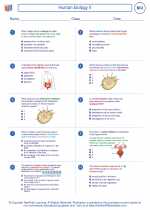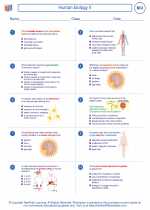Axon Hillock
The axon hillock is a specialized region of a neuron where the axon originates from the cell body. It is located at the junction between the cell body and the axon. The axon hillock plays a crucial role in the generation of action potentials, which are electrical impulses that allow neurons to communicate with each other and with other cells in the body.
Structure of Axon Hillock
The axon hillock is characterized by a high density of voltage-gated sodium channels. These channels are responsible for the initiation of action potentials. The high concentration of sodium channels at the axon hillock makes it highly excitable and capable of generating and propagating action potentials along the axon.
Function of Axon Hillock
The main function of the axon hillock is to integrate the incoming signals from the dendrites of the neuron and generate an action potential if the combined signal reaches a certain threshold. This process is known as summation, and it determines whether the neuron will transmit an electrical impulse to other neurons or target cells.
Study Guide
- What is the location of the axon hillock in a neuron?
- Describe the structure of the axon hillock and its importance in the generation of action potentials.
- Explain the function of the axon hillock in the transmission of electrical impulses within a neuron.
- Discuss the significance of voltage-gated sodium channels in the axon hillock.
- Compare and contrast the axon hillock with other regions of a neuron, such as the dendrites and the axon terminals.
◂Biology Worksheets and Study Guides High School. Human biology II

 Worksheet/Answer key
Worksheet/Answer key
 Worksheet/Answer key
Worksheet/Answer key
 Vocabulary/Answer key
Vocabulary/Answer key
 Vocabulary/Answer key
Vocabulary/Answer key
 Vocabulary/Answer key
Vocabulary/Answer key
 Vocabulary/Answer key
Vocabulary/Answer key
 Vocabulary/Answer key
Vocabulary/Answer key
 Vocabulary/Answer key
Vocabulary/Answer key
 Vocabulary/Answer key
Vocabulary/Answer key
